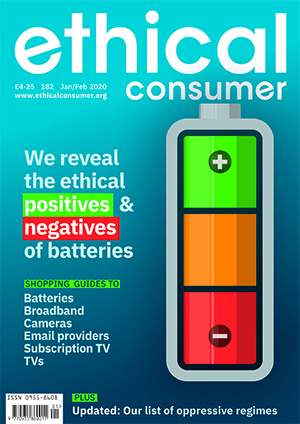You'll notice that the score table in this guide is no longer displaying. This is because the guide is over 5 years old and the scores were out of date. We have a programme of reviewing guides to schedule updates and this one is under consideration.
How to find an ethical digital camera
Digital camera sales are in steep decline, with the market size having dropped by 84% between 2010 and 2018.
The switch to smartphone cameras has meant that producers of standalone cameras have focused more and more on high-end models aimed at professional photographers and amateur enthusiasts (the blurring of the distinction has led to the portmanteau ‘prosumer’ – between professional and consumer).
In recent years, however, even sales of premium cameras have declined. The rate of innovation has plateaued, with new features more abstruse and less groundbreaking, and many photographers are happy to buy second hand or to keep using the camera they have already.
The ongoing trade dispute between China and the US has also impacted sales due to additional tariffs applied to Chinese manufactured devices.
Nevertheless, while some of the more niche brands have fallen away, many of the major players are going strong; not least because they are active in many other sectors. As always, the camera industry is heavily dominated by Japan, with eight of the eleven companies rated in this guide headquartered there.
Lens of the rising sun
Japanese dominance in the camera industry dates back to World War II, when the country’s military relied on optical apparatus and great advances were made in optical glass manufacturing.
After the war, Japan’s economy recovered quicker than Germany’s allowing Japanese camera companies to gain the upper hand over the German manufacturers who had dominated the camera market before the war.




